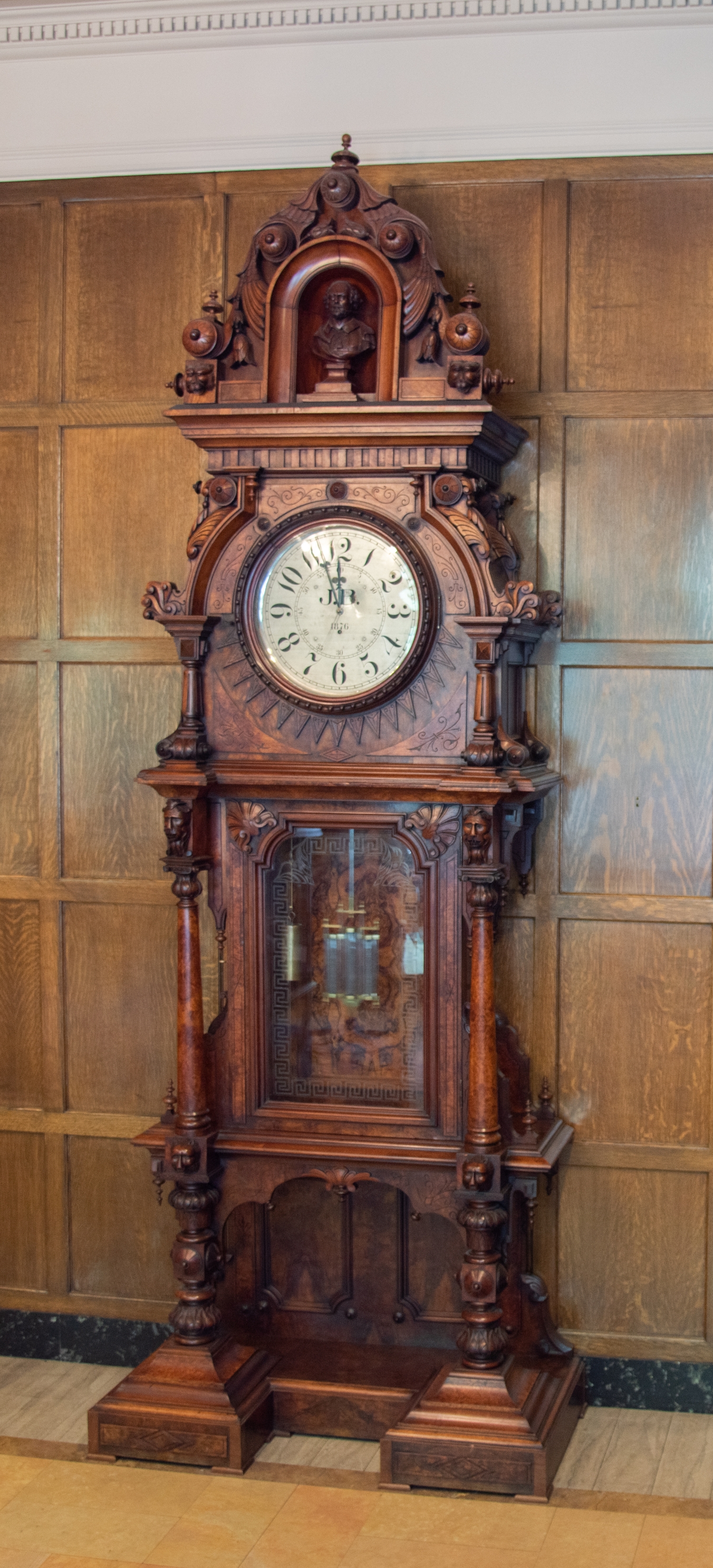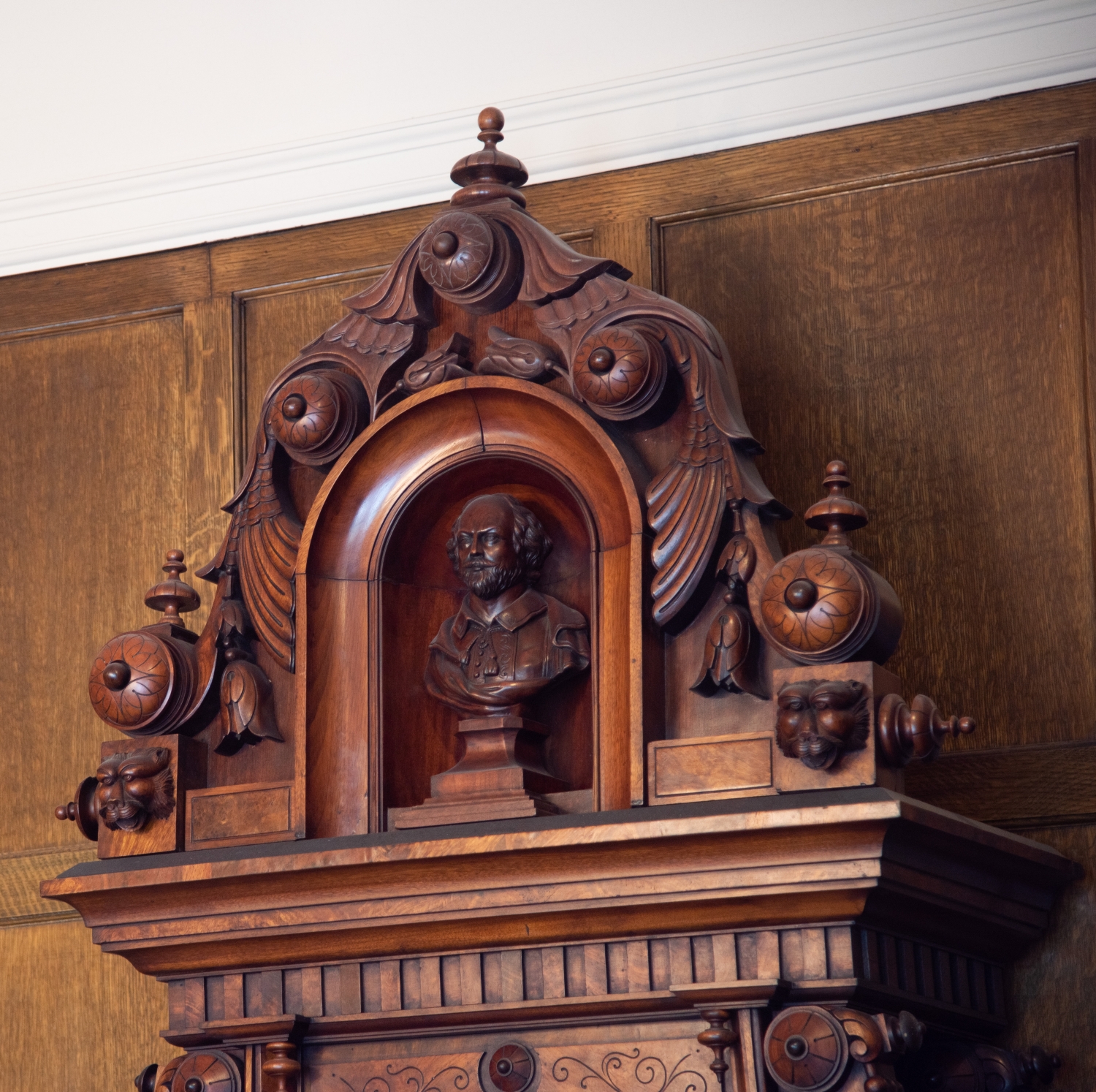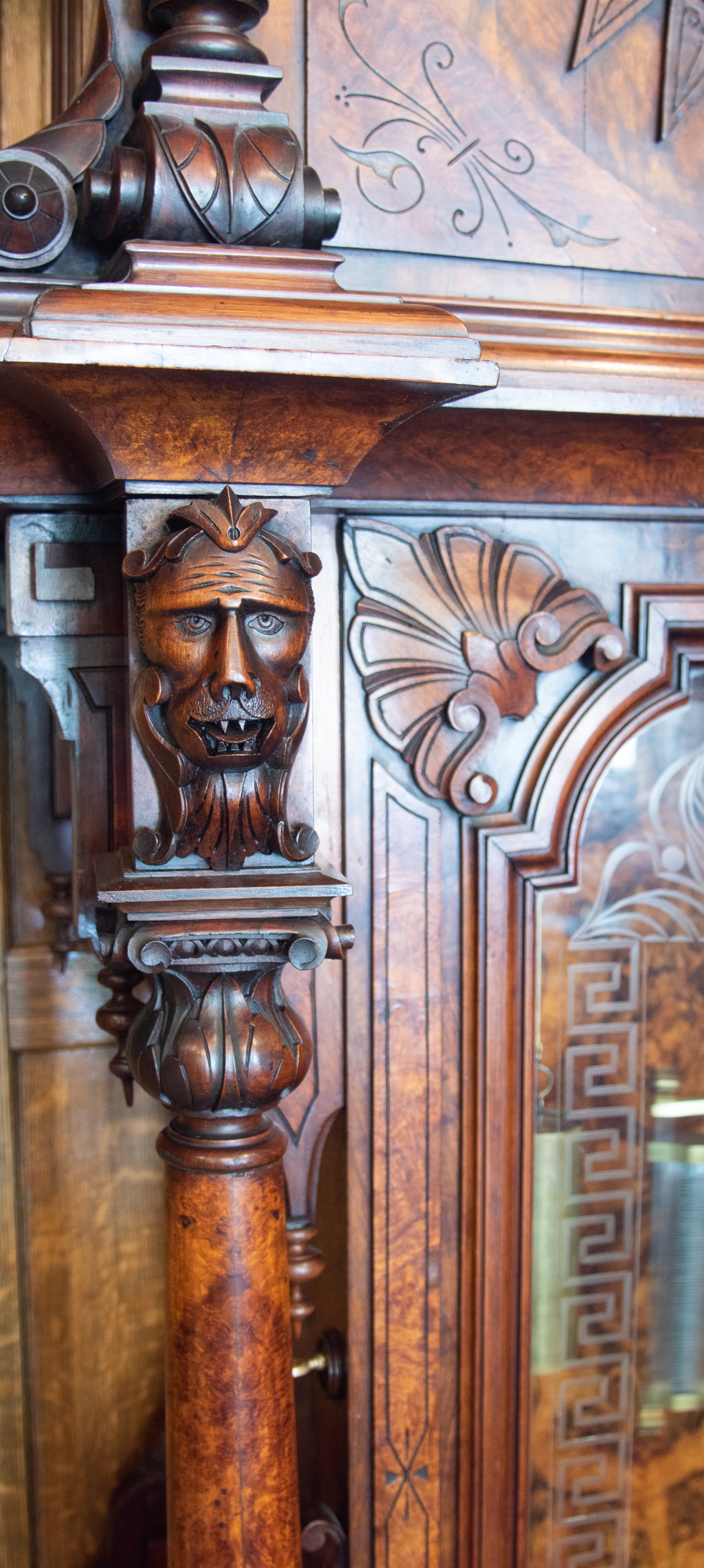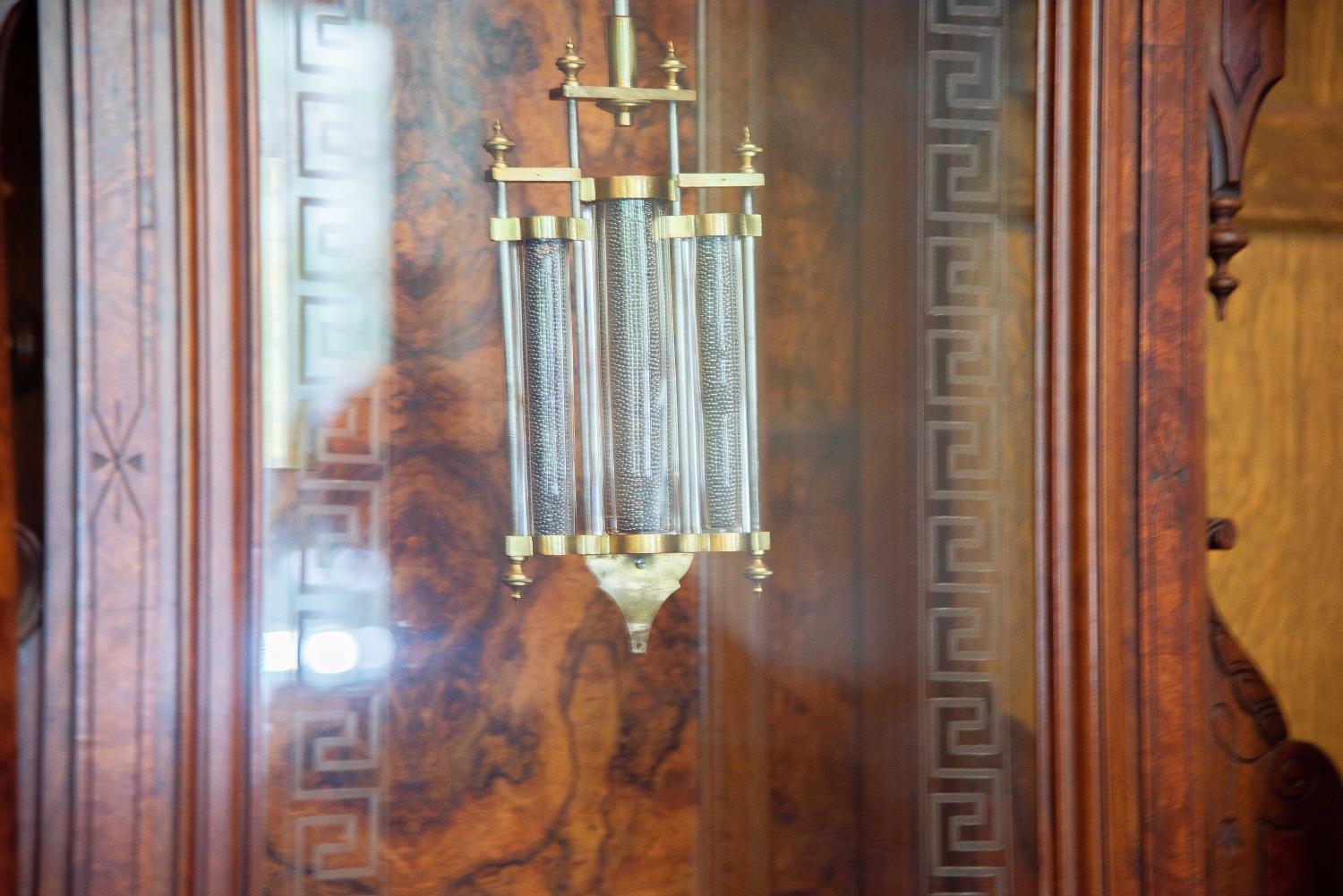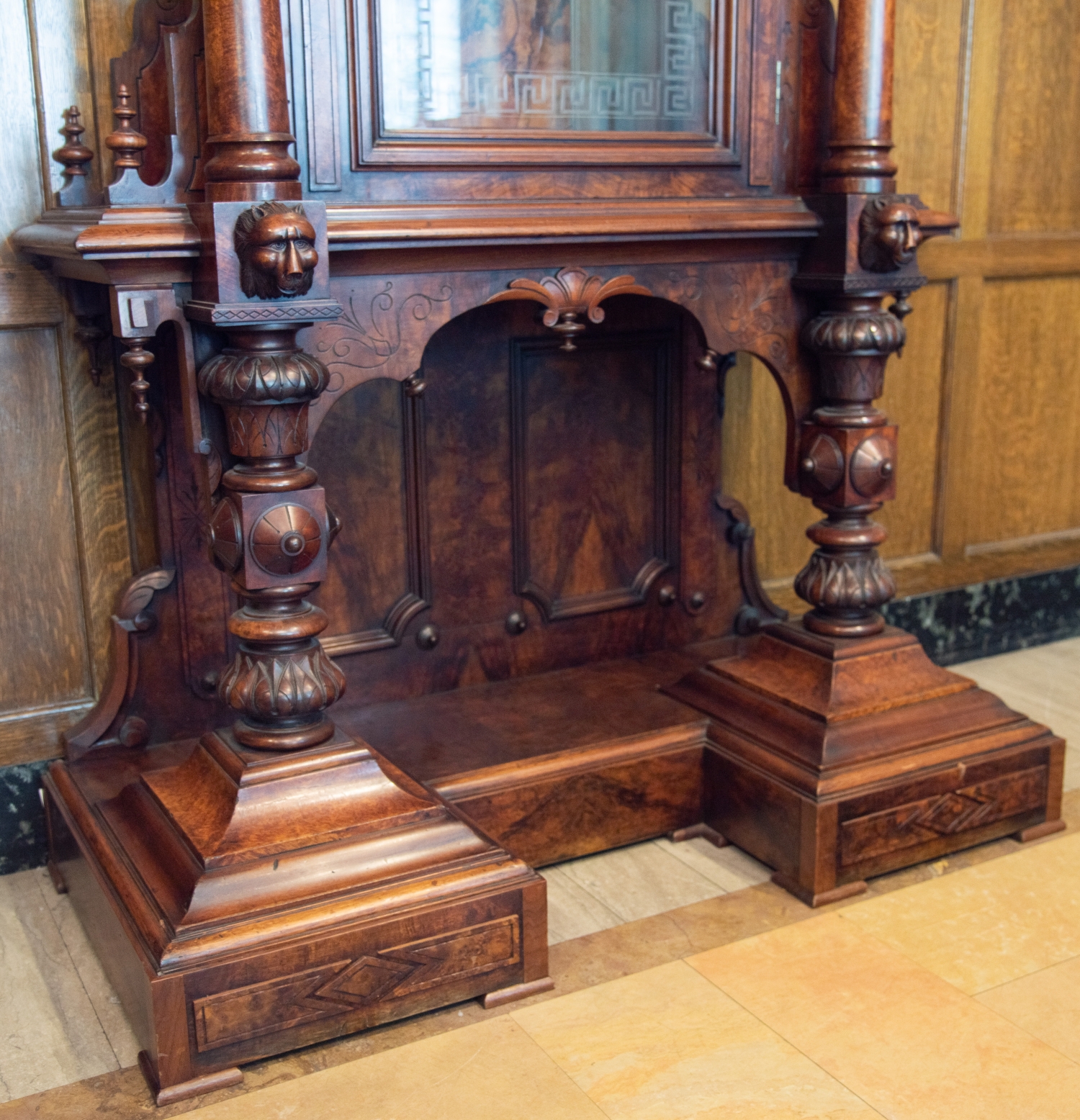Victorian Centennial Clock
This meticulously crafted clock has a large nineteen inch silver dial with the inscribed initials and date "J.B. 1876". This piece is purported to have been made for the Philadelphia Centennial Exhibition and may have been displayed in one of the convention halls. This clock has a pin wheel jewelers movement made by George A. Jones from upstate New York and his movements are considered the finest on that period. This large scale walnut Centennial presentation tall clock was stylistically influenced by the Renaissance Revival. This piece is unique with a carved crest with a relief bust, reminiscent of William Shakespeare, positioned in a hooded niche. At the arch of the crest are detailed carvings of topiary reliefs and five stylized roundels with five finials adorning the top. The base of the crest is ornamented with two carved animal heads, resembling lions. The crown has a simpler carved molding compared to the encircling area. True artistry is reflected in the clock face (featuring numbers for both hours and minutes), which includes four floral and leaf projections on the upper right and left area, four stylized roundels appearing under the crown, two front column reliefs and four additional stylized roundels at the base. Surrounding that, there are floral embellishments, three small stylized roundels and a triangular sunburst pattern wreathing the lower area. The pendulum is noted for burled column projections situated to the left and right of the glass encasement. At the top of each column is an anthropomorphic visage of a lion. At the base of each column a lion relief is also present. Ten finials are located in this area, five on each side. The glass encasement contains an etched meander pattern on the front, and on both glass sides are plain oblong etchings. Within the glass encasement there is a single weight and a three vial pendulum. The base of the clock has two burled carved columns. Each column is adorned with leave motifs and three stylized roundels. The back area contains four trim reliefs and six rosettes. The bottom of the base is carved with rectangular and diamond patterns.
